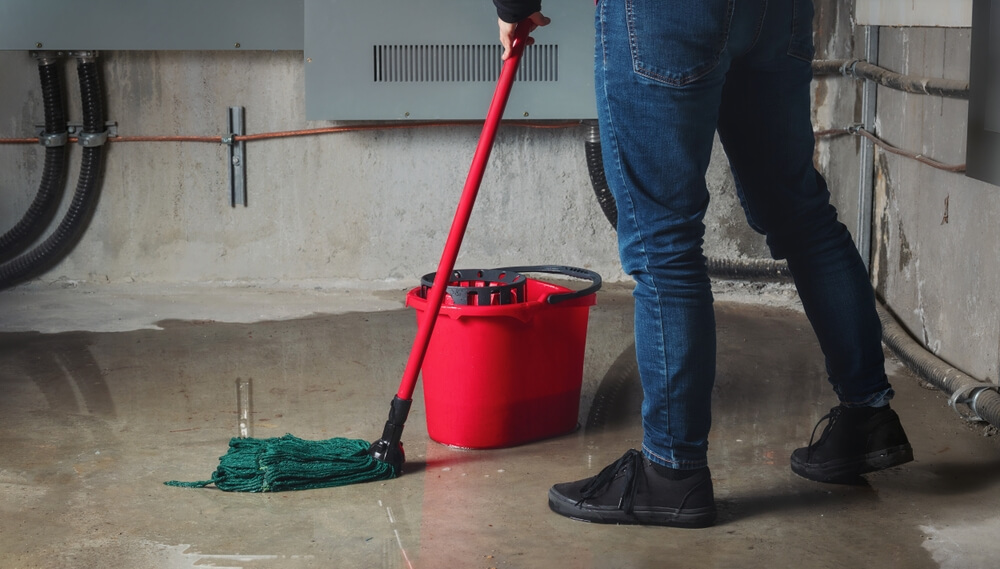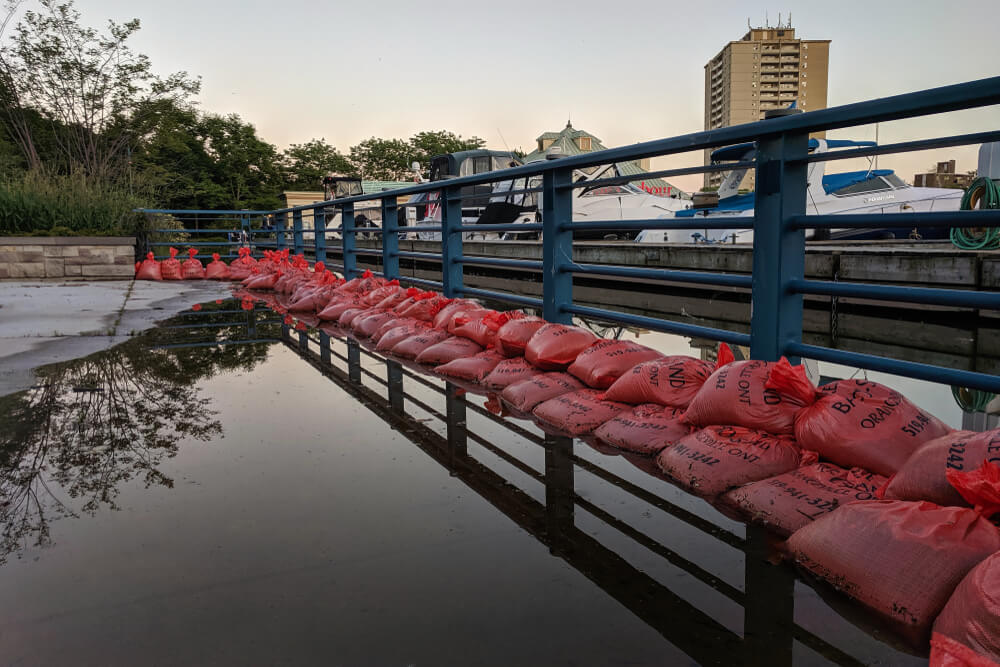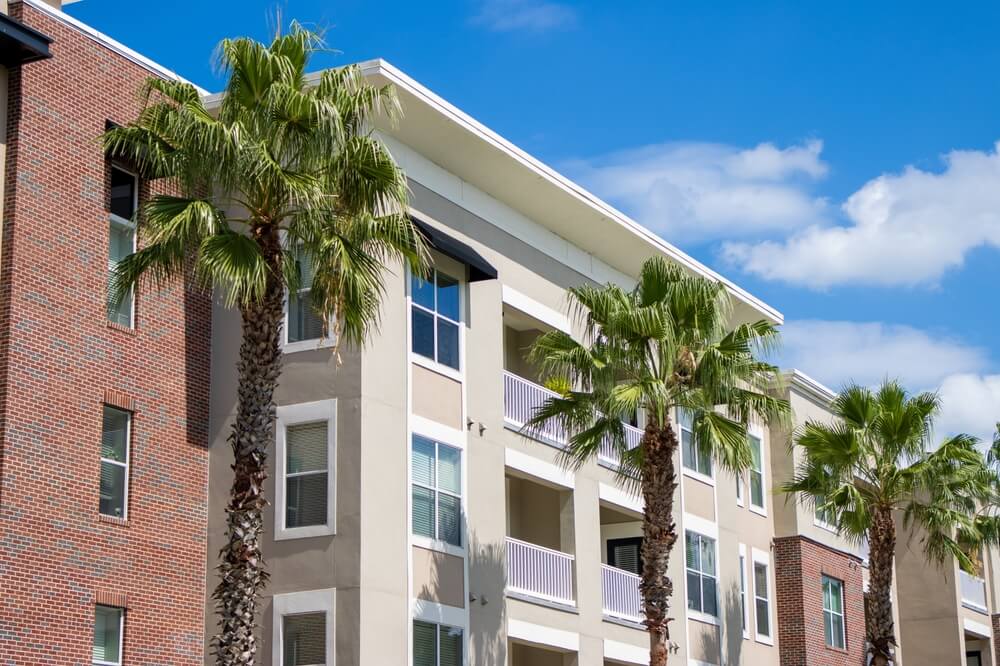
If you are not redirected within 30 seconds, please click here to continue.
Samedi: 10h – 16h HAE

If you are not redirected within 30 seconds, please click here to continue.
If you are not redirected within 30 seconds, please click here to continue.
How to protect your home from ice storms and spring flooding

The cost of natural disasters in Canada is going up, with extreme weather causing over $8 billion in damage in 2024, according to the Insurance Bureau of Canada (IBC). A lot of this damage is from water, but it's not just spring floods you need to worry about—ice storms can also damage your home.
Over the past decade, rising sea levels, extreme rainfall and storms, and rapidly melting snow due to climate change have increased the likelihood of flooding and the severity ice storms across Canada.
And this can have a significant impact on your home insurance.
By taking steps to protect your property, you can avoid expensive repairs and lower your risk. Here's what you need to know about protecting your home from both winter ice storms and spring floods.
Protecting your home from ice storms
Ice storms can severely impact your home by damaging pipes, roofs and drainage systems, but there are preventative measures you can take ahead of time to reduce your risk of costly repairs.
Protect your home from freeze/thaw cycles
Fluctuating temperatures during winter can cause pipes to freeze and burst. This occurs when water in the pipes expands as it freezes, leading to cracks or breaks. To avoid this, you can:
- Insulate pipes: Cover pipes in unheated areas like crawl spaces and garages.
- Maintain stable heat levels: Even if you’re away, keep your thermostat set to at least 12°C to prevent freezing.
- Locate your shut-off valve: The shut-off valve controls the water supply to your home. Knowing where it is allows you to quickly shut off water in case of a burst pipe.
Keep ice and debris off grates
Grates are metal or plastic covers over storm drains and sewer inlets, allowing water to drain while blocking debris. During severe storms, ice can obstruct stormwater grates, preventing water from draining properly and increasing the risk of sewer backups. Take steps to keep your property safe:
- Inspect local grates: Make sure that nearby grates are free from ice, snow, or debris.
- Consider adding sewer backup coverage: If water enters your home through a backup, this endorsement could cover repair costs.
Prevent ice build-up in gutters
Ice accumulating in your gutters can block water from flowing properly, leading to pooling around your home’s foundation. This can increase the risk of both structural damage and flooding. Here’s how you can prevent these issues:
- Clean gutters before winter: Remove leaves and debris in preparation for colder months.
- Install heated cables: Heated cables are electrical wires designed to generate heat. These can melt ice, allowing water to drain.
- Use a roof rake for snow removal: Keep roofs clear to avoid overloading gutters.
Address ice damming risks
Ice damming is one of the most harmful effects of ice storms. It happens when snow melts and refreezes at the edges of your roof. The resulting ice barrier traps water, which can penetrate your home under shingles and through walls. Prevent ice dams by:
- Properly ventilating and insulating your attic: Proper airflow prevents uneven melting.
- Clearing snow safely post-storm: Use a roof rake or hire professionals to remove accumulated snow.
- Installing an ice and water shield: During roof replacements, consider adding this protective layer under your shingles.
Related: The price of insuring an old roof - if it's even insurable
Understand your insurance policy
Damages from ice storms can be severe, but not all are automatically covered by standard home insurance policies. Here’s what you need to know:
- Burst pipes: Most policies cover damage from burst pipes, but only if you’ve taken reasonable steps to prevent them from freezing, such as maintaining heat in your home or insulating pipes.
- Ice damming: Damage from ice dams isn’t typically included in standard coverage but may be available as an optional endorsement. Check with your insurer to see if it’s right for you.
- Sewer backups: If water backs up through drains into your home due to ice or stormwater blockages, it’s usually not covered by standard policies unless you’ve added sewer backup coverage.
Review your policy and contact your insurer to confirm what’s covered.
Related: What will my car and home insurance policies cover when it comes to storm damage?
Protecting your home from spring flooding
There are many things you can do to keep your home from flooding. One of the most obvious is to avoid building in flood-prone areas in the first place. But with rising water levels, we now need to think about “climate-proofing” our homes.
Here are some other ways to reduce the potential for flood damage to your home:
Flood-proof your home
- Install a backwater valve. If you don’t already have one, consider installing a backflow valve in your sewer line. That will prevent waste from coming into your home through your basement floor drain.
- Depending on how much work is required, the cost to install a backflow valve could run you several thousand dollars. But when you consider that the average cost to repair a flooded basement is about $43,000, this is money well spent.
- A backflow valve can also help reduce your insurance premium.
- Maintain eavestroughs and gutters. Make sure your gutters are free from obstruction and that downspouts direct the runoff at least five feet from your home’s foundation.
- Make sure the ground slopes away from the foundation. This will prevent water from pooling around your foundation and eventually finding its way into your home.
Understand your home insurance policy
The standard home insurance policies don’t automatically cover flooding, and most basic insurance policies only cover water damage when the water originates inside your home.
For example:
- If a storm or falling tree limb damages your roof, your insurance will cover the cost of repairs.
- If rainwater seeps into your home before those repairs are completed, your policy will also cover the resulting water damage.
Unless you add specific endorsements, you may be left to handle damages out-of-pocket.
Add flood insurance endorsements
If you live in an area at risk of flooding, it’s worth considering additional coverage, such as:
- Overland flood insurance: Covers damage from surface water, including overflowing rivers or water pooling around your foundation and seeping into your home. This type of coverage could increase your premiums, especially if you’re in a high-risk area, and may not be available if you’re located in a floodplain.
- Sewer backup coverage: Protects your home from damage caused by overwhelmed municipal systems, where wastewater forces its way into your basement through drains. Without this endorsement, you won’t be covered for cleanup costs in these instances.
Learn more: Is severe flooding making your home uninsurable?
Stay prepared year-round
Extreme weather—whether from spring flooding or winter ice storms—requires planning and preparation. From upgrading your home’s defenses to properly tailoring your insurance coverage, you can minimize risk and avoid costly repairs.
However, before obtaining insurance, it’s best to shop around to find the coverage you need at the lowest price, by comparing rates and policies from multiple insurance providers.
The cost of natural disasters in Canada is going up, with extreme weather causing over $8 billion in damage in 2024, according to the Insurance Bureau of Canada (IBC). A lot of this damage is from water, but it's not just spring floods you need to worry about—ice storms can also damage your home.
Over the past decade, rising sea levels, extreme rainfall and storms, and rapidly melting snow due to climate change have increased the likelihood of flooding and the severity ice storms across Canada.
And this can have a significant impact on your home insurance.
By taking steps to protect your property, you can avoid expensive repairs and lower your risk. Here's what you need to know about protecting your home from both winter ice storms and spring floods.
Don't waste time calling around for home insurance
Use RATESDOTCA to shop around and compare multiple quotes at the same time.
Finding the best home insurance coverage has never been so easy!
Get money-saving tips in your inbox.
Stay on top of personal finance tips from our money experts!










